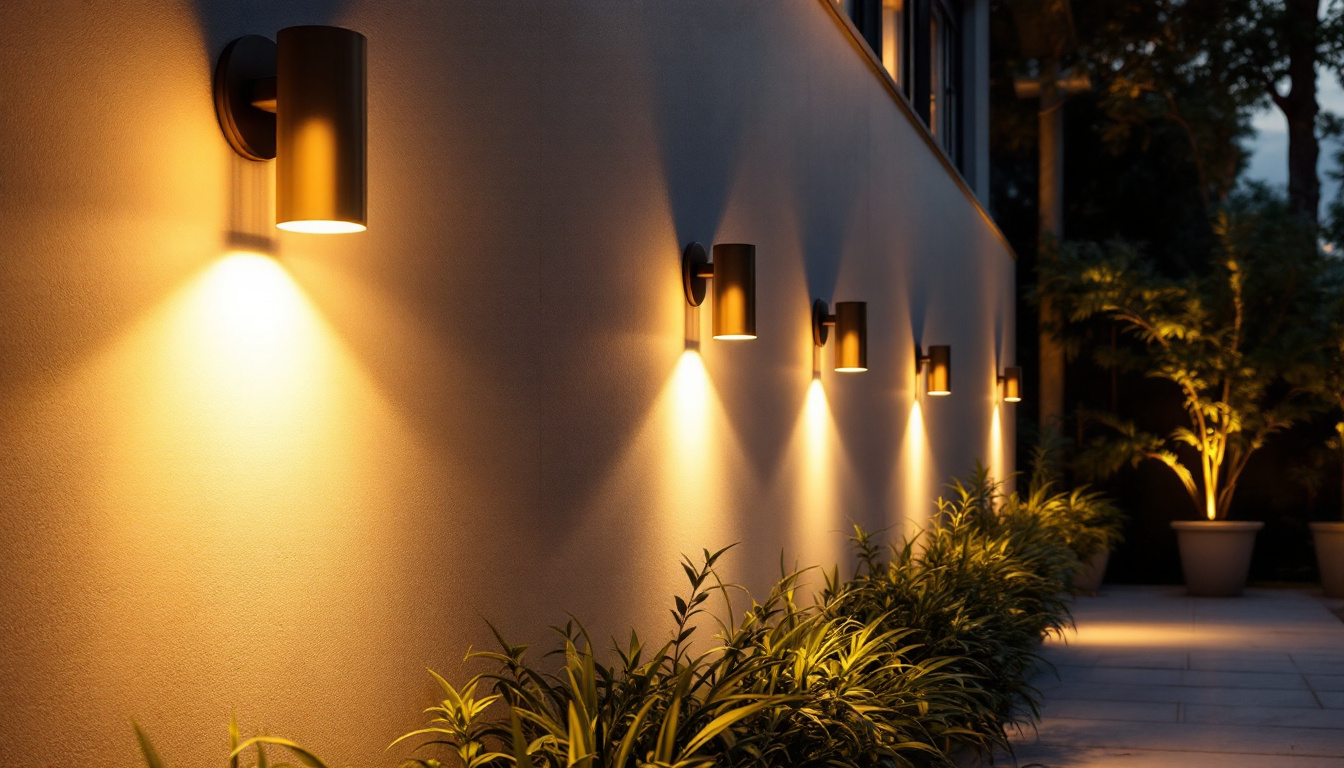
When it comes to designing functional and comfortable garage spaces, lighting contractors must consider a variety of factors. One often overlooked element is the ceiling fan. While most people associate ceiling fans with indoor living spaces, they can play a crucial role in garages as well. This article explores the benefits, types, and installation considerations of ceiling fans specifically for garages, providing valuable insights for lighting contractors.
Ceiling fans serve multiple purposes in a garage setting, enhancing both comfort and functionality. Understanding these benefits can help lighting contractors make informed recommendations to clients.
Garages can often become hot and stuffy, especially during warmer months. Ceiling fans help circulate air, creating a more comfortable environment for anyone working or spending time in the garage. By promoting airflow, ceiling fans can help reduce the temperature, making it easier to work on projects or store items without the risk of heat damage.
Moreover, during colder months, ceiling fans can be reversed to push warm air down from the ceiling, helping to maintain a more consistent temperature throughout the space. This dual functionality makes ceiling fans a versatile addition to any garage. In addition to temperature regulation, improved air circulation can also help reduce humidity levels, which is particularly beneficial in garages that house tools and equipment susceptible to rust and corrosion. By keeping the air moving, ceiling fans can create a healthier environment that minimizes the risk of mold growth and extends the lifespan of stored items.
In an era where energy efficiency is paramount, ceiling fans can contribute significantly to reducing energy costs. By using a ceiling fan in conjunction with heating or cooling systems, homeowners can often set their thermostats a few degrees higher or lower, depending on the season. This can lead to substantial savings on energy bills over time.
Additionally, modern ceiling fans are designed to be energy-efficient, with many models featuring LED lighting and Energy Star ratings. Lighting contractors should emphasize these features when discussing options with clients, showcasing how ceiling fans can be both functional and eco-friendly. Furthermore, the use of ceiling fans can reduce the reliance on air conditioning units, which not only lowers energy consumption but also decreases wear and tear on these systems, leading to longer lifespans and fewer maintenance costs.
Many ceiling fans come equipped with integrated lighting fixtures, providing an additional source of illumination in the garage. This can be particularly beneficial in spaces where overhead lighting may be insufficient or where specific tasks require more focused light.
When selecting ceiling fans, contractors should consider models that offer adjustable lighting options, such as dimmable features or multiple light settings. This flexibility allows homeowners to customize the lighting based on their needs, whether they are working on a project or simply using the garage for storage. Additionally, the aesthetic appeal of ceiling fans with integrated lighting can enhance the overall look of the garage, transforming it from a utilitarian space into a more inviting area. By choosing stylish designs and finishes, homeowners can create a cohesive look that complements their home’s exterior and adds value to their property.
Not all ceiling fans are created equal, and selecting the right type for a garage setting is essential. Various styles and functionalities cater to different needs, and understanding these options can help contractors guide their clients effectively.
Standard ceiling fans are the most common type found in residential settings. They typically feature a motor, blades, and a light kit. For garages, it’s essential to choose a fan with a robust motor that can handle the larger space and potential dust accumulation. Look for models designed for high ceilings, as they often come with longer downrods to ensure optimal airflow.
When recommending standard ceiling fans, consider the blade size and pitch. Larger blades with a higher pitch can move more air, making them ideal for larger garages. Additionally, contractors should advise clients on the appropriate fan size based on the garage’s square footage to ensure maximum efficiency. It’s also worth noting that the fan’s design can complement the garage’s aesthetics; sleek, modern designs can elevate the overall look while providing functionality.
Garages that are frequently exposed to moisture or outdoor elements may benefit from outdoor ceiling fans. These fans are built to withstand humidity and temperature fluctuations, making them a durable choice for garages that double as workspaces or storage areas.
Outdoor ceiling fans often feature sealed motors and rust-resistant finishes, which enhance their longevity. When recommending these fans, contractors should highlight their versatility, as they can also be used in covered patios or outdoor living spaces, providing added value for homeowners. Furthermore, many outdoor models come equipped with energy-efficient LED lighting, making them not only functional but also cost-effective in the long run. This dual functionality can be particularly appealing to homeowners looking to maximize their investment.
For larger garages or those used for commercial purposes, industrial ceiling fans may be the best option. These fans are designed for high airflow and can effectively cool large spaces, making them ideal for garages that house multiple vehicles or equipment.
Industrial fans typically have larger blades and more powerful motors, allowing them to move significant volumes of air. When discussing these options, contractors should emphasize their energy efficiency and durability, as they are built to withstand heavy use in demanding environments. Additionally, many industrial fans come with advanced features such as variable speed settings and remote controls, allowing users to customize airflow according to their specific needs. This adaptability can be a game-changer for garages that require different cooling levels depending on the season or the number of people working inside.
Proper installation is crucial to ensure the safety and functionality of ceiling fans in garages. Lighting contractors should be well-versed in the specific considerations that come with installing ceiling fans in these unique spaces.
Before installing a ceiling fan, it’s essential to assess the electrical requirements. Garages may not always have the necessary wiring or electrical boxes in place to support ceiling fans. Contractors should evaluate the existing electrical infrastructure and determine whether upgrades or modifications are needed.
Additionally, it’s important to ensure that the circuit can handle the fan’s load. This may involve consulting local electrical codes and regulations to ensure compliance. Proper grounding and secure mounting are also crucial to prevent any safety hazards.
Determining the ideal mounting height and location for a ceiling fan is vital for optimal airflow and safety. Fans should be installed at least seven feet above the floor to prevent any obstruction and ensure safe operation.
Contractors should also consider the fan’s location in relation to other light fixtures and equipment in the garage. Proper placement can enhance airflow and lighting efficiency, creating a more functional workspace.
Garages can accumulate dust and debris, which can affect the performance of ceiling fans. Lighting contractors should advise clients on the importance of regular maintenance and cleaning to keep fans operating efficiently.
Simple tasks like dusting the blades and checking for any loose screws can go a long way in maintaining the fan’s performance. Additionally, contractors should recommend that clients inspect the fan’s motor and electrical connections periodically to ensure everything is in good working order.
With numerous ceiling fan options available, lighting contractors must help clients choose the right model for their specific needs. Several factors should be taken into account during the selection process.
The size of the garage plays a significant role in determining the appropriate ceiling fan. A small garage may only require a compact fan, while a larger space may need multiple fans or a more powerful model. Contractors should measure the garage’s dimensions and recommend fans based on the square footage to ensure optimal airflow.
Additionally, the scale of the fan should complement the overall design of the garage. A large, industrial fan may look out of place in a small, residential garage, while a sleek, modern fan may not provide enough airflow in a larger space.
While functionality is paramount, aesthetics also play a role in the selection of ceiling fans. Garages can be an extension of a home’s style, and homeowners may want a fan that complements their design preferences.
Contractors should present clients with a variety of styles, from traditional to contemporary, ensuring they find a fan that aligns with their vision. Additionally, color options and finishes can enhance the overall look of the garage, making it a more inviting space.
Finally, budget is a critical factor in selecting ceiling fans. Contractors should help clients understand the range of options available within their budget while emphasizing the long-term benefits of investing in quality fans.
While it may be tempting to choose the cheapest option, contractors should educate clients on the potential drawbacks of lower-quality fans, such as reduced efficiency and shorter lifespans. By discussing the value of investing in reliable, energy-efficient models, contractors can help clients make informed decisions that will benefit them in the long run.
Incorporating ceiling fans into garage designs can significantly enhance comfort, energy efficiency, and overall functionality. Lighting contractors play a vital role in guiding clients through the selection and installation process, ensuring that the chosen fans meet their specific needs.
By understanding the benefits, types, and installation considerations of ceiling fans, contractors can provide valuable insights that lead to satisfied clients and successful projects. As garages continue to evolve into multi-functional spaces, ceiling fans will remain an essential component in creating comfortable and efficient environments.
Ready to elevate your garage projects with the best in ceiling fan solutions? Look no further than LumenWholesale. We provide lighting contractors with an exceptional range of high-quality, spec-grade ceiling fans at unbeatable wholesale prices. With LumenWholesale, you can forget about the middleman and enjoy superior products at the best value. Our selection is designed to meet the highest industry standards, ensuring reliable and high-performance lighting for every space. Plus, with the convenience of bulk buying and free shipping, you can stock up on all your lighting needs without any hidden fees. Don’t compromise on quality or price. Visit LumenWholesale today and experience the perfect blend of quality, affordability, and convenience for your lighting projects.

Discover how solar-powered walkway lights not only illuminate paths but also enhance safety in outdoor spaces.

Discover why lighting contractors should prioritize outdoor wall lights in their projects.

Discover how LED UFO lighting can revolutionize your projects with energy efficiency and cutting-edge design.

Discover the frequent pitfalls lighting contractors encounter with modern flush mount ceiling lights.